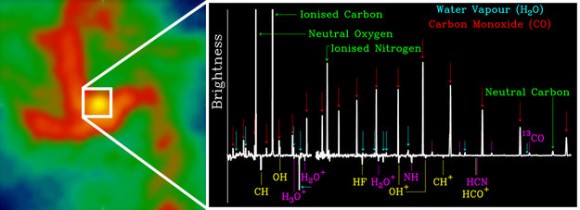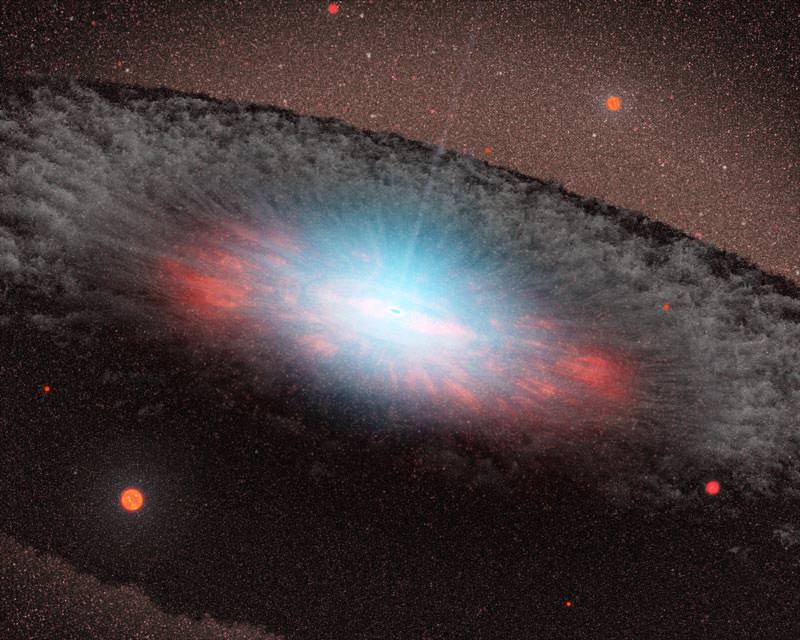It’s a simple menu, but smoking hot. The black hole at the center of the Milky Way galaxy is sucking in ultra-hot molecular gas, as seen through the eyes of the Herschel space telescope.
“The biggest surprise was quite how hot the molecular gas in the innermost central region of the galaxy gets. At least some of it is around 1000ºC [1832º F], much hotter than typical interstellar clouds, which are usually only a few tens of degrees above the –273ºC [-460ºF] of absolute zero,” stated the European Space Agency.
Herschel, which is out of coolant and winding down its scientific operations, will continue producing results in the next few years as scientists crunch the results. The telescope has found a bunch of basic molecules in the Milky Way that include water vapour and carbon monoxide, and has been engaged in looking to learn more about the gas that surrounds the massive black hole at our galaxy’s center.
In a region called Sagittarius* (Sgr A*), this huge black hole — four million times the mass of the sun — is thankfully a safe distance from Earth. It’s 26,000 light years away from the solar system.

Trouble is, there’s a heckuva lot of dust blocking our view to the center of the galaxy. Herschel got around that problem by taking pictures in the far-infrared, seeking heat signatures that can bely intense activity in and around the black hole.
“Herschel has resolved the far-infrared emission within just 1 light-year of the black hole, making it possible for the first time at these wavelengths to separate emission due to the central cavity from that of the surrounding dense molecular disc,” stated Javier Goicoechea of the Centro de Astrobiología, Spain, lead author of a paper reporting the results.
The science team supposes that there are strong shocks within the gas (which is magnetized) that help turn up the heat. The shocks could occur when gas clouds butt up against each other, or material shoots out Fast and Furious-style between stars and protostars (young stars.)
“The observations are also consistent with streamers of hot gas speeding towards Sgr A*, falling towards the very center of the galaxy,” stated Goicoechea. “Our galaxy’s black hole may be cooking its dinner right in front of Herschel’s eyes.”
Source: ESA


There is a nebula called G2 that is approaching Sgr A* that will start to generate fireworks this year.
LC
Here’s the (PDF) paper: Far-Infrared Spectroscopy of the Galactic Center. Hot Molecular Gas: Shocks versus Radiation near SgrA*